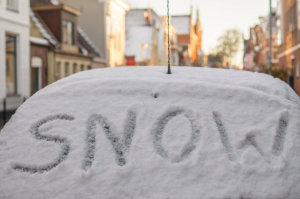
Mother Nature is an adept and prolific sculptor. She shapes and fashions snow into everything from individual delicate flakes to massive cornices that can weigh tons and grow to be as large as a school bus while they cling to mountain overhangs. Most of the time, Mother Nature has no competition when working in her frozen medium.
However, when sculptors from around the world descend on Breckenridge every winter for the International Snow Sculpture Championships, Summit County is the stage for a fierce showdown where the snow flies. The artists come to carve snow, but not on skis.
Snow sculpting is a tradition that dates back to the 1960s, and Breckenridge has been hosting the championships since the 1990s. The event has grown into a world-class contest that attracts thousands of spectators, snow art connoisseurs, and visitors to the area.
Not Your Average Art
Venus de Milo has been gracing museums for over 2000 years. Like most sculptures, she was created from marble that has withstood the test of time. When sixteen teams of artists begin work in January on their creations for the International Snow Sculpture Championship, they know their masterpieces could be gone in a flash.
Each team begins with a 12-foot tall 25-ton block of compacted snow. They carve and shape it with knives, chisels, and cheese graters to create a one-of-a-kind three-dimensional work of art that will disappear by the end of ski season.
Past entries in the competition have included intricate underwater scenes, giant animal busts, and abstract creations that only the mind can define.
As White as Snow
There are few rules to the contest that draws international entrants from around the world. Typically, sixteen teams — some from unexpected places like Mongolia, Turkey, and Mexico — selected from a field of 200, gather in Breckenridge to begin work.
Every sculpture is judged for its artistic value, detail, and technical ability. Two of the strictly applied rules are that teams may not use any power tools during the competition and no colored dyes are permitted. Additionally, teams may not use any internal supports, so they must rely on the sturdiness of the packed snow for every weight-bearing detail.
Each sculpture is pure white, forcing the artists to use light, shadow, and relief to create effects, depth, and individual features in their work. Beginning with a 12-foot cube of snow weighing 50,000 pounds, the teams will shave, chip, and shovel away more than half of the snow before their creations are ready for viewing.
Racing the Clock
During championship week, snow sculpting is a full-time occupation for most team members. They may work around the clock to complete their masterpieces before the final deadline.
Each team is permitted 65 hours — spread over five days — to create a potential award-winning entry. Depending on snow conditions, weather, temperatures, and even body heat, that can mean an intense and down-to-the wire competition. One wrong move can mean an avalanche of disaster for the competing teams.
Creating an Outdoor Museum
Downtown Breckenridge’s Riverwalk Center is home to the competition and these snowy masterpieces until they melt. Teams must complete their work in full view of the public, and spectators come from around the world to watch the giant blocks of snow transformed into art.
On the final day of work, teams often work through the night to be ready for judging on Saturday morning at 10:00 a.m. Once the awards are given, the snow sculptures remain on display at Riverwalk Center for another week, as weather conditions permit, before they return to the mountain waters to be recycled for another year.



